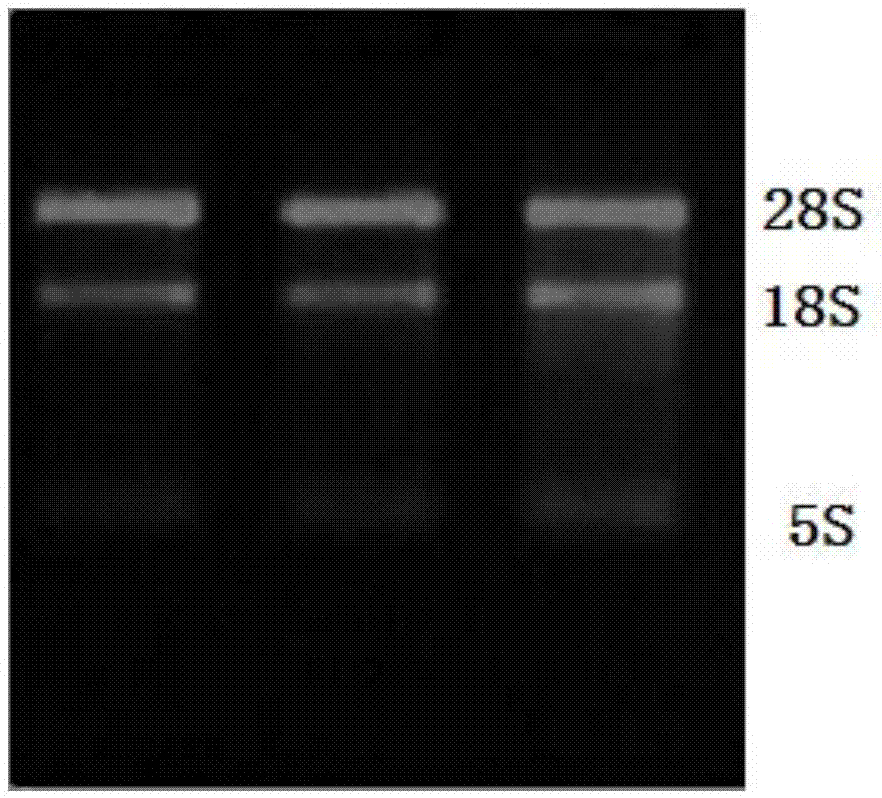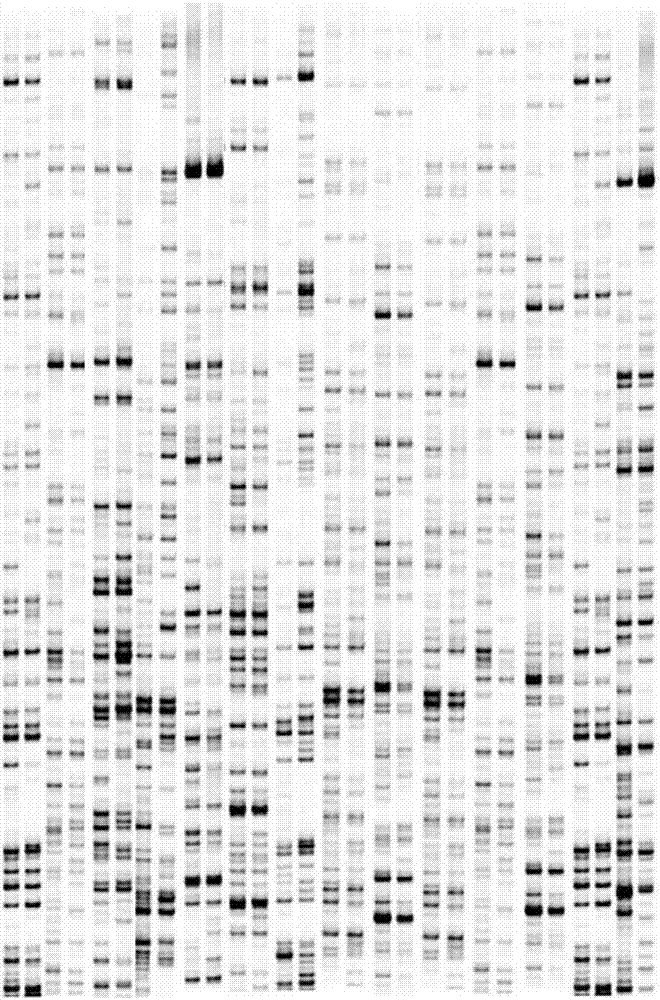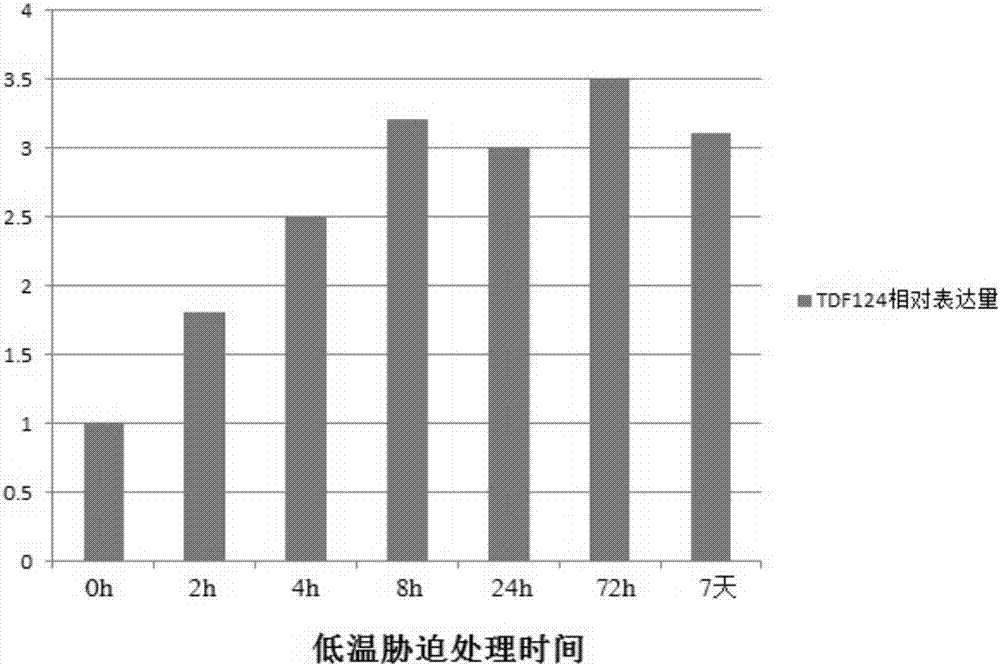Plant low temperature resistance gene, and cultivation method of transgenic low temperature resistant plant
A cultivation method and low temperature-resistant technology, applied in the field of plant genetic engineering
- Summary
- Abstract
- Description
- Claims
- Application Information
AI Technical Summary
Problems solved by technology
Method used
Image
Examples
Embodiment 1
[0033] Example 1 Screening of genes related to low temperature stress in Chinese chives
[0034] This embodiment provides a method for screening genes related to low temperature stress in Chinese chives using cDNA-AFLP technology, which specifically includes the following steps:
[0035] 1. Low temperature stress treatment
[0036] (1) Take Mongolian leek seeds and rinse them with tap water, then soak them in sterile water for 10 minutes. Then they were sterilized with 70% alcohol for 30 seconds, washed three times with sterile water, and inoculated on hormone-free MS basic medium. Take the leaves of sterile seedlings with a height of about 5 cm, cut them into 3 mm long sections from the tip to the base, and inoculate them on the callus induction medium in turn. After the callus is formed, transfer the callus to the differentiation medium In about 2 weeks, the callus differentiated into seedlings; when the seedlings of Mongolian Chinese chives grew to about 3 cm, they were t...
Embodiment 2
[0060] Example 2 Verification of TDF124 related to low temperature stress of Mongolian chives
[0061] This embodiment provides a method for verifying low temperature stress-related TDF124 using RT-PCR technology, which specifically includes the following steps:
[0062] 1. Low temperature stress treatment of Mongolian leek seedlings
[0063] According to the low temperature stress treatment method shown in Example 1, the Mongolian leek seedlings were placed in a temperature environment of 0-5°C and cultivated for 0h, 2h, 4h, 8h, 24h, 72h and 7d.
[0064] 2. Semi-quantitative amplification of TDF124
[0065] Take the leaves of Allium mongolica treated in step 1, extract the total RNA of the leaves according to the method shown in Example 1, and reverse transcribe to obtain cDNA. Using the above cDNA as a template, primers TDF124-F and TDF124-R were designed based on the sequence information of TDF124 in Example 1. The nucleotide sequence of TDF124-F is 5'-TTGGGCTTGGACTGCCCCG...
Embodiment 3
[0067] Example 3 Amplification of the full-length cDNA sequence of TDF124 related to low temperature stress of Chinese chives
[0068] This example provides a method for amplifying the full-length cDNA sequence of TDF124 associated with low temperature stress in Chinese chives, using the SMARTer RACE cDNA amplification kit (clontech, USA). Specifically include the following steps:
[0069] 1. Prepare RACE-Ready cDNA
[0070] (1) Add the reagents shown in Table 4 to the reaction tube, mix well and centrifuge briefly to obtain the Buffer Mix required for RACE-Ready cDNA preparation;
[0071] Table 4 Buffer Mix
[0072] 5XFirst-Strand Buffer
2.0 μL
DTT (20mM)
1.0 μL
dNTP Mix(10mM)
1.0 μL
[0073](2) Take another two reaction tubes, add 2.0 μL of RNA prepared in Example 1 and 1.0 μL of 5’-CDS Primer A to one of the reaction tubes, as the preparation system of 5’-RACE-Ready cDNA; Add 3.0 μL of RNA prepared in Example 1 and 1.0 μL of 3'-CD...
PUM
 Login to View More
Login to View More Abstract
Description
Claims
Application Information
 Login to View More
Login to View More - R&D
- Intellectual Property
- Life Sciences
- Materials
- Tech Scout
- Unparalleled Data Quality
- Higher Quality Content
- 60% Fewer Hallucinations
Browse by: Latest US Patents, China's latest patents, Technical Efficacy Thesaurus, Application Domain, Technology Topic, Popular Technical Reports.
© 2025 PatSnap. All rights reserved.Legal|Privacy policy|Modern Slavery Act Transparency Statement|Sitemap|About US| Contact US: help@patsnap.com



